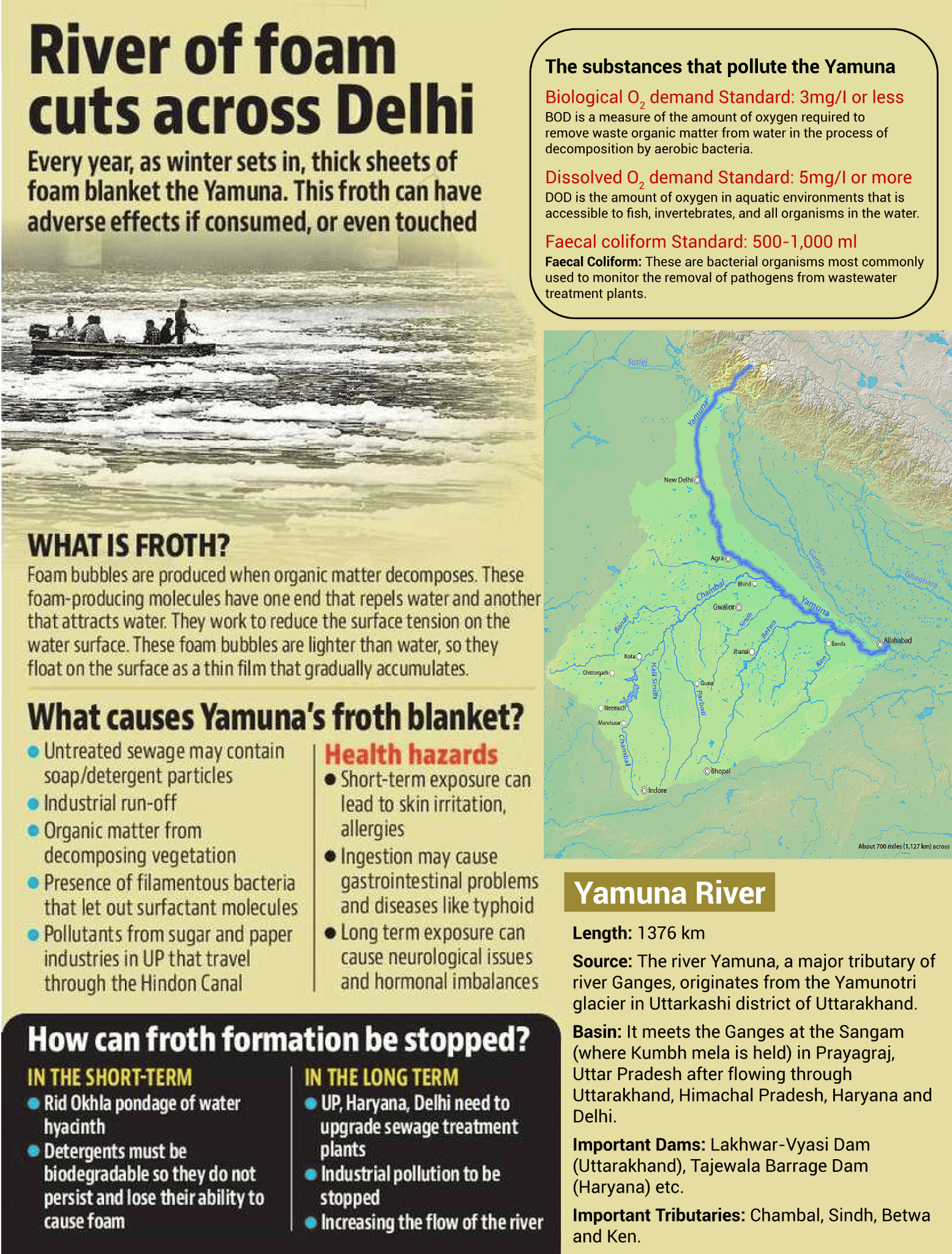Nonylphenol Ethoxylates and Nonylphenol | 19 Oct 2024
Why in News?
A report titled "Nonylphenol — An Endocrine Disrupting Chemical" was released by Toxics Link, an environmental research organisation, and the US-based non-profit Environmental Defense Fund.
- The report highlights the widespread use of Nonylphenol Ethoxylates (NPEs) and Nonylphenol (NP) in India and the associated environmental and health risks
What are Nonylphenol Ethoxylates (NPEs) and Nonylphenol (NP)?
- Chemical Characteristics: These are surfactants that contribute to environmental pollution, particularly causing frothing in the Yamuna River, indicating high levels of pollutants.
- These are recognised as an endocrine-disrupting chemical, toxic to aquatic life, and detrimental to human health, affecting reproductive and developmental processes.
- Regulatory Status: NPEs are banned in many countries for use in detergents; however, India currently lacks specific regulations governing these chemicals.
- NP was banned in the cosmetics sector in India in 2009.
- Usage in Industries: NP and NPEs are prevalent in various sectors, including textiles and leather, detergents and cleaning products, paper and pulp, food packaging, cosmetics, construction, automotive, agrochemicals, paints, and metalworking fluids.
- Health and Ecological Concerns:
- Toxicity to Aquatic Life: NP is toxic to fish, aquatic plants, and invertebrates, causing acute and chronic poisoning that reduces survival rates, impairs growth, and leads to reproductive failure.
- Human Health Risks: NP acts as an endocrine-disrupting chemical, mimicking estrogen and causing hormonal imbalances, which can lead to reproductive disorders and increased cancer risk.
- Environmental Persistence: NP is resistant to degradation and can remain in aquatic ecosystems for long periods, continuously impacting wildlife and potentially entering the human food chain.
- Recommendations for Safer Alternatives:
- The report suggests adopting safer, cost-effective, and technically viable alternatives to NP and NPEs. However, the transition towards such alternatives has been slow in India.
UPSC Civil Services Examination, Previous Year Question (PYQ)
Q. How is the National Green Tribunal (NGT) different from the Central Pollution Control Board (CPCB)? (2018)
- The NGT has been established by an Act whereas the CPCB has been created by an executive order of the Government.
- The NGT provides environmental justice and helps reduce the burden of litigation in the higher courts whereas the CPCB promotes cleanliness of streams and wells, and aims to improve the quality of air in the country.
Which of the statements given above is/are correct?
(a) 1 only
(b) 2 only
(c) Both 1 and 2
(d) Neither 1 nor 2
Ans: (b)

